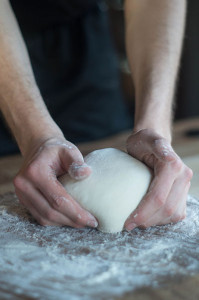
There is an aura surrounding handmade wooden products — something that goes beyond the higher price tag and quality of the items. It is the notion that a tree sprouted many years ago; season upon season it grew; and from that tree came the raw material for the chair you sit upon, the table you set at suppertime, or the swing on your grandmother’s porch.
That raw material spent many more hours in the woodshop, where it was worked in the hands of a skilled craftsman — where it became the item you know and love.
For many folks with an affinity for wood products, the idea of woodworking can be romantic, interesting, and intimidating all the same. And while making your own grandfather clock may indeed be out of reach, venturing into the world of woodworking by carving your own wooden spoon is not.
A good wooden spoon is an invaluable tool in the kitchen, and you will find one — if not several — in just about any household. There are as many ways to make a wooden spoon as there are wooden spoon makers. I tend to believe that the best way to learn is to find one of those makers and do it their way. So I went to my brother, Zach.

The first thing my brother taught me was to select a good hardwood: oak, maple, and cherry are all great for carving spoons. He took me out to his woodpile, sat down on a log, and got to work splitting some lumber with his old fashioned froe. Froes have been in use since the colonial era and are perfect for riving wood along the path of the grain. This is key, as you will want to work with the grain, “fitting” your spoon design to best take advantage of the natural attributes of the wood. A hardwood carver’s mallet comes in handy during this step, and will again later too.
Use a small axe or hatchet to block out a piece of wood, large enough for the kind of spoon that you want. Some like to sketch a basic design on the wood block; my brother prefers to get right down to it — again, letting the grain do most of the work for him. The handle should be parallel to the grain, which may result in an odd shape, but also in a stronger utensil. Cut away excess wood from either side of the handle and around the bowl, bringing the spoon closer to its eventual shape. Leave space to allow for errors or changes. What you have at this stage should look something like a small canoe paddle.

Once satisfied with the general shape of your project, you will carefully round the handle and shape the outside of the bowl. Using your Case knife or another fine blade, work slowly — resisting the temptation to remove large amounts of wood with each pass. There will be little room for second chances as you carve away more and more excess material. Take time to examine the shape of the spoon-to-be. Do you like what you see? Then it’s time to move to the next step.

At this point we moved down to the basement workshop, where Zach secured the spoon to his workbench with a simple clamp and began to hollow out the bowl with a spoon gouge. The carver’s mallet is useful once again, as pushing the gouge through hardwood by hand will quickly leave you fatigued and prone to mistakes. Start at one end of the bowl and remove some wood, working in the direction of the grain. Before going too deep into the wood, turn around and work back from the opposite side. By going back and forth, you can remove large amounts of wood—working in the direction of the grain the entire time—while reducing the risk of splitting your wood.

Straight cuts will work best for the bottom of the spoon, while angled cuts will be needed to shape the walls of the spoon bowl. For those finer cuts, it is better to use muscle power rather than continuing with the carver’s mallet. As you get a feel for carving spoons it’s best not to go too thin—play it safe, lest you may end up with a slatted spoon!

Once you’re done, you may wish to sand down the surface of your utensil and smooth over the blade markings. For his part, Zach chooses not to, as it encourages him to hone his knife skills with each project. Whether you sand or not, you will go ahead and boil your hard-won wooden spoon for a few minutes, and then leave it to dry out. Once dried completely, oil it with some Howard Wood and Butcher Block Conditioner and you will be good to go! Your first hand carved wooden spoon is ready for kitchen use.
[Editor’s Note: Love wooden spoons but don’t want to make your own? Have a look at our beautiful, hand-carved wooden utensils; they’re made for us from durable, beautiful American Maple.]


































